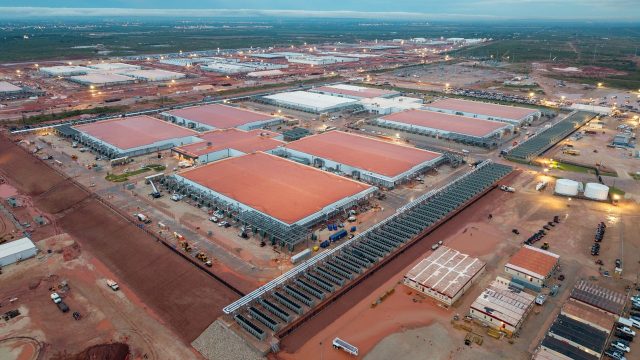
The great AI spending spree has reached an “epic level,” said Eliot Brown and Robbie Whelan in The Wall Street Journal. Just in the past three years, tech firms have “committed more toward AI data centers than it cost to build the entire interstate highway system over four decades.” The splurge is most evident in remote places like Ellendale, N.D., where a $15 billion data center “bigger than 10 Home Depots” is under construction thanks to a little-known cloud computing firm called CoreWeave that has seen its fortunes skyrocket in recent months. Last week, OpenAI unveiled a “Central Park–size complex” in the Texas scrublands and disclosed plans to construct roughly a dozen more of them, a build-out that will cost $1 trillion. Some Silicon Valley watchers have begun to worry about parallels to the overzealous telecom companies that “spent over $100 billion blanketing the country with fiber-optic cables” in the early 2000s. Like the early internet, AI hasn’t yet proved it can deliver returns on a 12-figure investment. Morgan Stanley said only $45 billion in total was spent on AI products last year.
What might be most worrisome here is that many of the deals involving Nvidia’s prized chips are “circular,” said Jeremy Kahn in Fortune. In one case, Nvidia “agreed to spend $1.3 billion over four years” to rent its own AI chips from Lamda, another cloud computing firm, which bought those chips “with borrowed money collateralized by the value of the GPUs themselves.” Such dizzying arrangements—in which Nvidia typically invests or lends money to its own customers—could give investors an “inflated perception of the true demand for AI.” It is what it looks like, said John Herrman in New York: “a small group of large companies handing money back and forth.” The last time we witnessed such obscene examples of vendor financing was before the telecom bust in the late 1990s.
Unlike the dot-com and telecom bubbles, this is a more stable funding boom, said Liz Hoffman in Semafor. “The robber barons and telecom wildcatters borrowed to build their empires and dragged their financiers down with them.” But most of today’s AI investment is coming from tech giants that are “healthy enough to back the checks their owners are writing.” A lot of today’s spending could nonetheless “prove worthless,” said The Economist, if AI adoption isn’t as fruitful as expected. “Although the shells of data centers and new power capacity could find other uses,” billions of dollars’ worth of servers and specialized chips could become obsolete. “America’s economy, too, would suffer a nasty shock” if these investment projects were scaled back, costing jobs. “The bigger the boom gets, the bigger the knock-on consequences of an AI chill could be.”
Tech firms are investing billions to build massive AI data centers across the U.S.






